Gospel chord progressions are all about emotion, soul, and deep musical connections.
They really bring out the warmth of harmony and the richness of sound, and they have the ability to completely transform a song, making it both powerful and uplifting.
As producers or musicians interested in gospel chord progressions, it’s super important to understand their chord structure and how they create movement.
Plus all the techniques that bring out that signature gospel sound people love.
That’s why I’m breaking down everything you need to know, like:
- Basic chord structures in gospel music ✓
- Major and minor chords in detail ✓
- Dominant chords and their role in creating tension ✓
- Seventh chords and their rich harmonic layers ✓
- How to use passing chords effectively ✓
- Creating movement with secondary dominants ✓
- Syncopated rhythms in gospel piano ✓
- How to master all types of chord changes ✓
- Popular gospel progressions & their signature traits ✓
- Pro tips, tricks, and techniques for a unique sound ✓
- Much more ✓
This way, you’ll be able to successfully create gospel chord progressions that sound both authentic and professional.
You’ll never feel stuck or limited in your gospel compositions.
Your gospel songs will always have that soulful, uplifting energy, and you’ll be able to create music like a true professional.
Table of Contents
What Makes Gospel Chord Progressions Special?
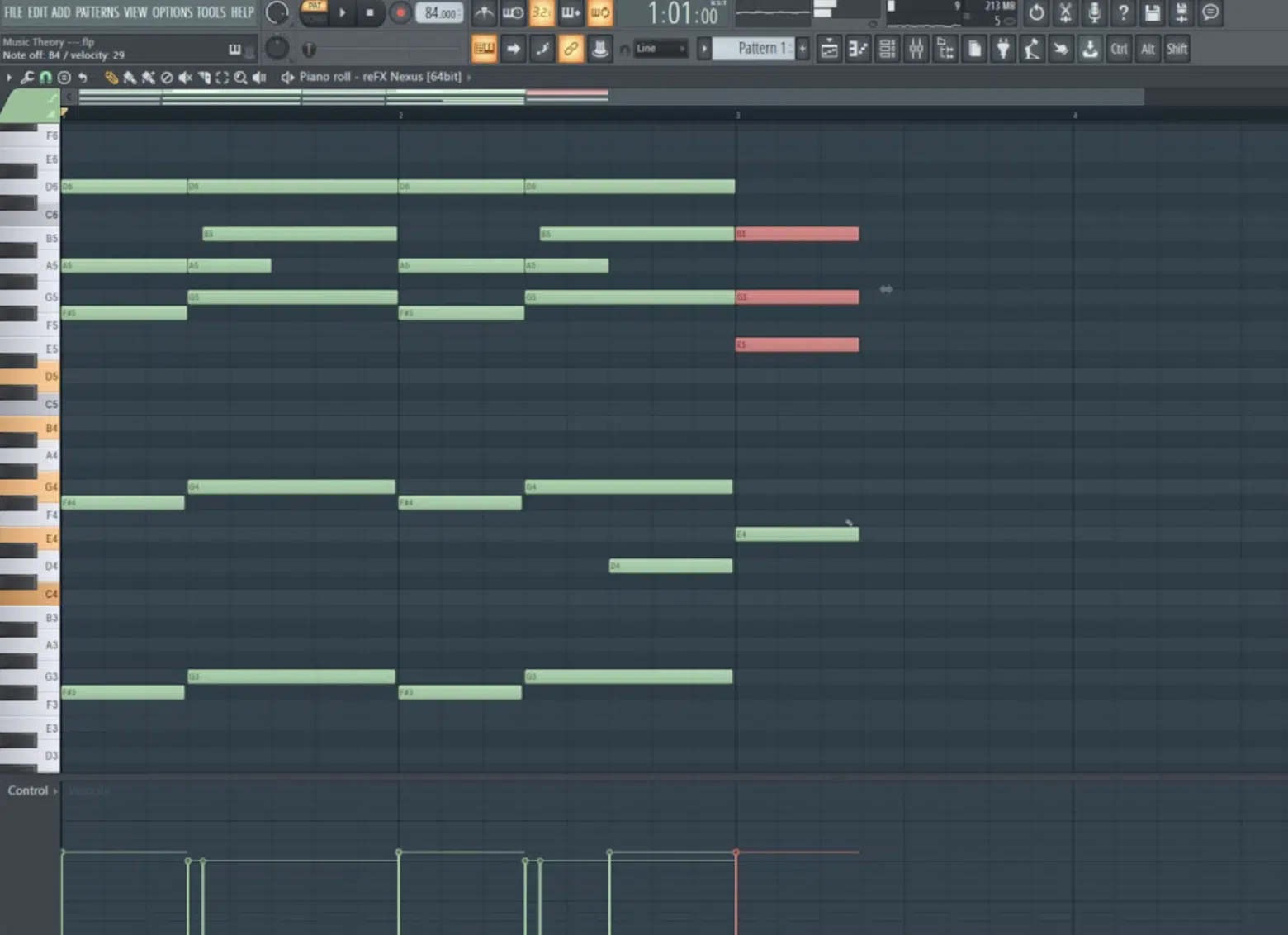
Gospel chord progressions are loved for their soulful, uplifting feel 一 defined by intricate harmonies, dominant chords, and syncopated rhythms.
What sets gospel music apart is its ability to bring strong emotions to the table using specific chord types like:
- Major seventh chords
- Diminished chords
- Secondary dominants
It brings you on a unique harmonic journey, which people really get hypnotized by.
Whether it’s the smooth transition of a 5-1 chord progression or the warmth of a C major seventh chord, gospel progressions have a distinct way of connecting with listeners.
They’re fundamental for any music producer or musician like yourself aiming to capture that iconic gospel sound and have it translated properly.
Don’t worry, we’ll break down everything you need to know, in detail, throughout the article so you really get a solid understanding.
Basic Structure of Gospel Chord Progressions
To truly understand gospel chord progressions, you must start with all the different core elements. They rely heavily on a blend of major chords, minor chords, and other harmonic techniques, so let’s start by breaking it down.
-
Major Chords and Minor Chords in Gospel
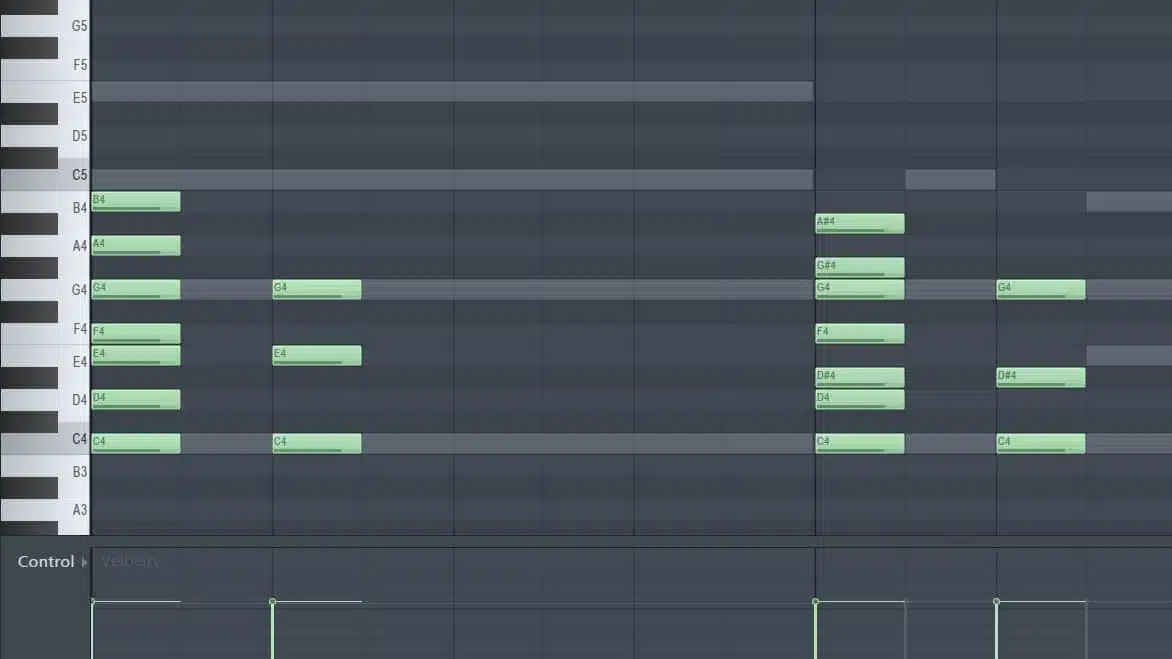
Major chords, like the C major triad (C, E, G), are foundational in gospel chord progressions, offering a bright and uplifting tone.
In the key of C major, the major scale (C, D, E, F, G, A, B) forms the basis for throwing these major chords together.
For example, you might start with C major, move to G major (G, B, D), then return to C major which creates a simple but joyful I-V-I progression.
A common gospel pattern is to move from the I chord (C major) to the IV chord (F major: F, A, C), showing off the scale’s natural flow and adding fullness.
Minor chords such as A minor (A, C, E), introduce a more emotional quality, often used in call-and-response patterns that traditional gospel tracks are made of.
For example, switching between a C major chord and an A minor chord can create a basic progression that blends joy with introspection (a soul contrast I’d describe it as).
A common example is C-Am-F-G (I-vi-IV-V), which blends the hopeful sound of C major with the more reflective tone of A minor.
NOTE: In gospel music, the major triad and minor triad often work together 一 adding depth to the harmonic structure for some seriously unique, heart-warming sounds.
You might try layering E minor (E, G, B) after C major to add color and dimension to your progression for some unexpected transitions that maintain the song’s emotional vibe.
It’s all about what you’re going for of course, but overall, understanding how to use the minor scale alongside the major scale is key to that authentic gospel sound.
-
Dominant Chords and Their Role in Creating Tension

Dominant chords are chords built on the fifth scale degree of any given key and are known for creating strong tension that demands resolution.
In the key of C major, the dominant chord is G major, and when we add a minor seventh to it, we get G7 (G, B, D, F).
It intensifies the pull back to the tonic chord, C major (C, E, G).
This tension is created by the tritone interval between the third (B) and the seventh (F) of the G7 chord 一 making it feel unstable and ready to resolve.
The 5-1 chord progression (G7 to C major) is one of the most fundamental movements in gospel music, offering a sense of release that’s both powerful and satisfying.
We’ll talk about that in the following section.
You can also add a flat ninth to the G7 (G, B, D, F, Ab) to create an altered chord which adds even more tension before resolving, which is great.
Personally, I find that using dominant chords effectively in gospel songs brings a sense of drama and anticipation that’s extremely hard to replicate with other chords.
Building Chords in the Key of C Major
The key of C major is the starting point for many gospel chord progressions, so I thought we’d really break it down in detail. All the essential chords you’ll need to play gospel piano effectively, we’ll cover now 一 focusing on the major chord, C major seventh chord, and more.
-
C Major Chord & C Major Seventh Chord
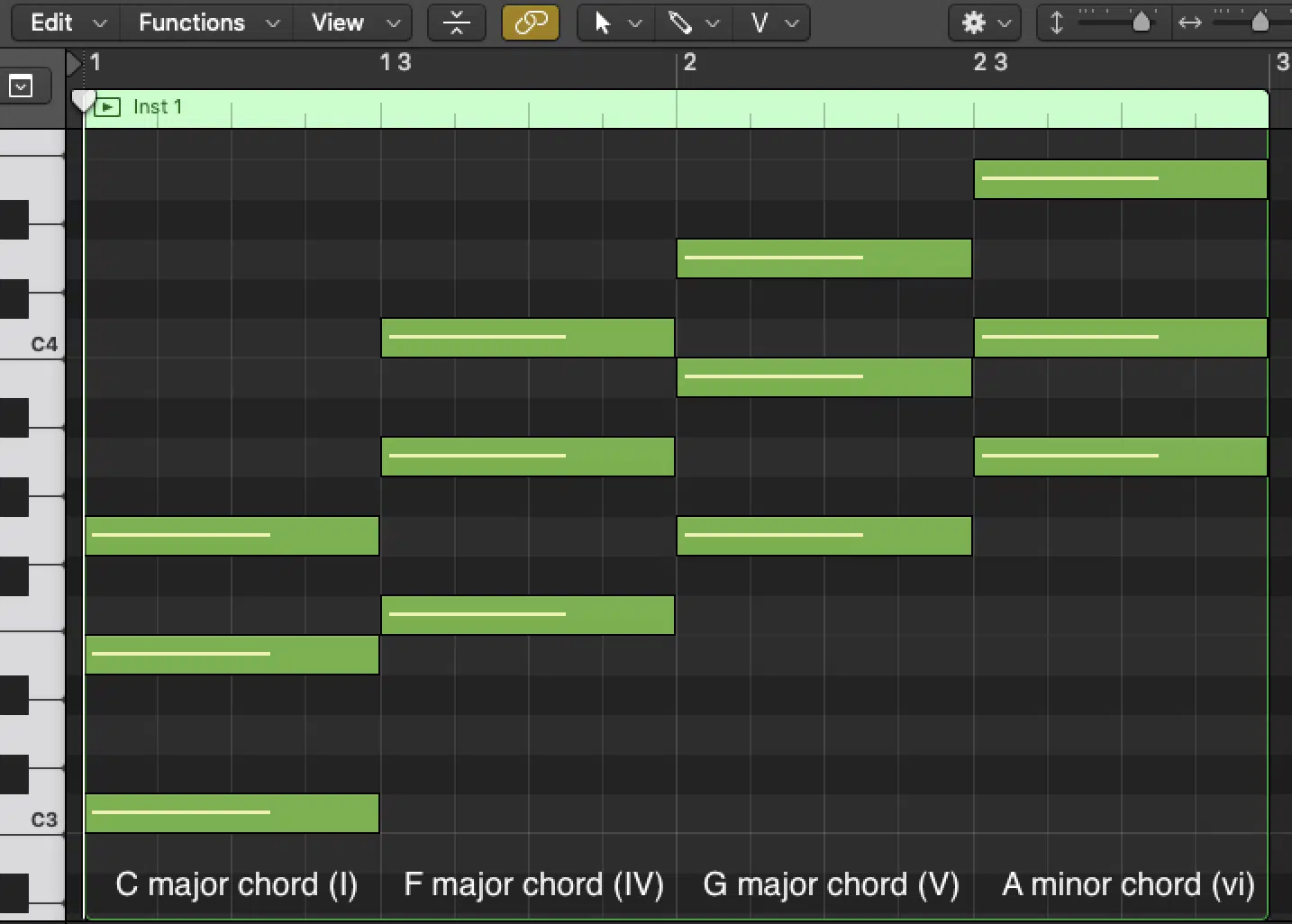
The C major chord (C, E, G) is one of the most basic yet important gospel chords around with a bright, uplifting sound that defines many gospel chord progressions.
To add warmth, the C major seventh chord (C, E, G, B) comes into play, creating a smoother, more soulful sound.
I remember one of my early piano sessions, trying to make my gospel progressions sound less robotic…
Adding that B note to form the C major seventh chord changed everything, and after that the music felt way more complete, more human, and less amateur.
The trick here is to let the major seventh chord resolve gently, often leading into a minor chord like A minor (A, C, E) for contrast.
You can use these gospel chords to create both basic progressions and more advanced movements, especially when combined with syncopated rhythm.
As you play gospel piano, let the C major and C major seventh chords act as foundational tones, setting up the other chords in the progression perfectly.
-
Major Triad vs. Minor Triad: Understanding the Foundation
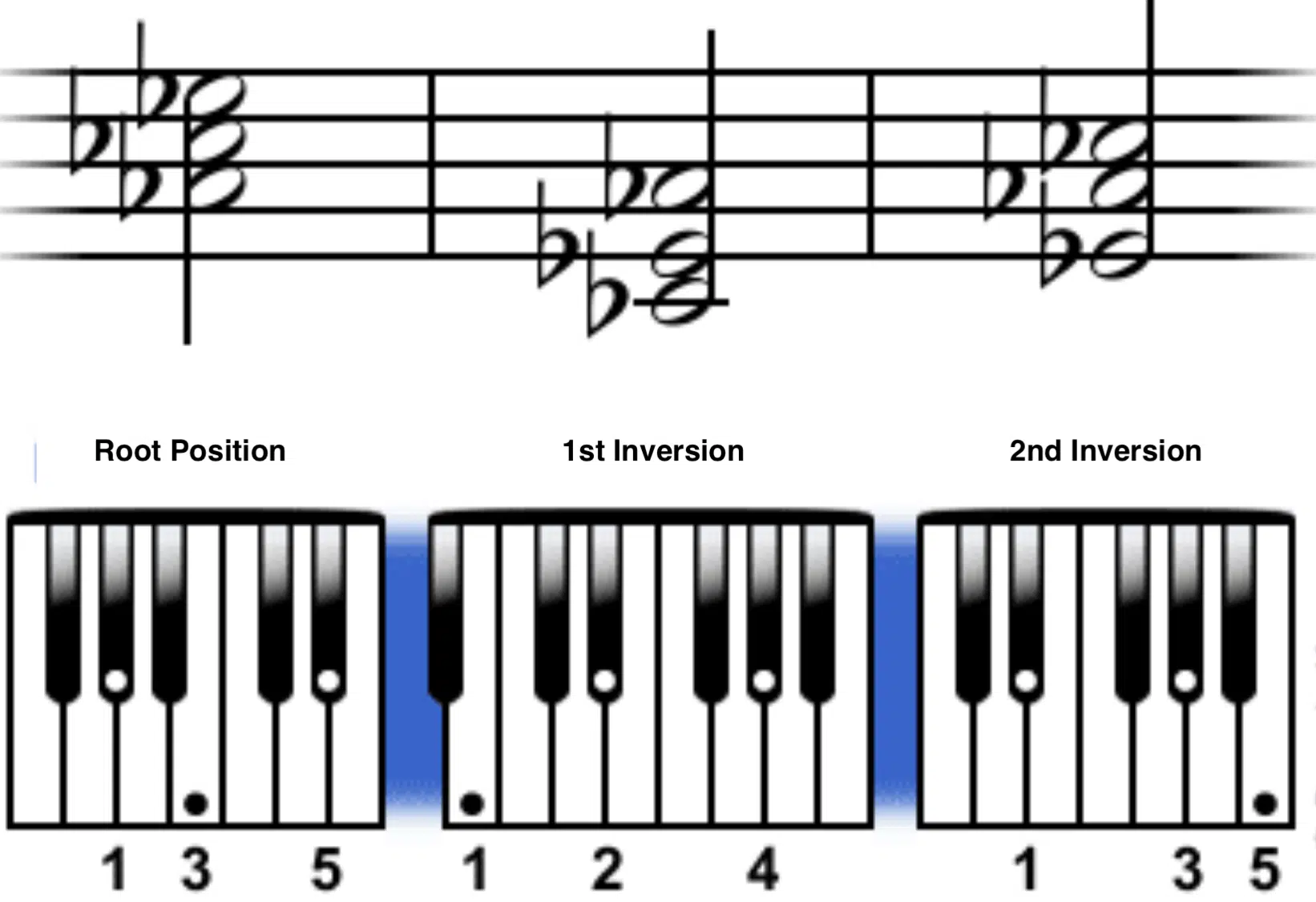
Minor triads
The major triad is built from the 1st, 3rd, and 5th scale degrees of the major scale, producing a bright, joyful sound.
In the key of C major, the major triad includes:
- C (root)
- E (major third)
- G (perfect fifth)
This specific spacing creates a more stable, uplifting harmony, which is why it’s often a foundational component of many famous gospel chord progressions.
The minor triad, on the other hand, has a more sad, soulful sound, formed by the 1st, flat 3rd, and 5th scale degrees of the minor scale.
For example, an A minor triad (A, C, E) is constructed by lowering the third of the major triad 一 shifting the tone from bright to deeply expressive.
In gospel music, it is ideal for adding some yearning or contemplation.
NOTE: If you’d like to learn everything about triads, we’ve got you covered.
-
2-5-1 Chord Progression

The 2-5-1 progression is a popular chord movement in both jazz and gospel music you’ll hear all the time when working in these genres.
It offers much smoother, more connected sounds when compared to the straightforward 5-1 resolution.
In the key of C major, the progression involves moving from D minor (D, F, A), to G7 (G, B, D, F), and finally resolving to C major (C, E, G).
The D minor chord, or ii chord, adds a sense of anticipation before the G7 chord, which creates strong tension.
This technique works wonders when it comes to gospel music because the ii chord softens the transition, making the 5-1 progression feel more extended and soulful.
NOTE: For more complexity, try incorporating a passing diminished chord, like D#dim7 (D#, F#, A, C), between the ii and V chords.
Personally, I’ve found that using the 2-5-1 progression adds warmth and fluidity to gospel songs, making the final resolution feel even more powerful, so definitely don’t overlook it.
Essential Seventh Chords (7th Chords)
When it comes to gospel chord progressions, seventh chords are everything. They can add depth to your music, taking the basic chords to a whole new level of soulfulness. Let’s break down the different ways these seventh chords work their magic.
-
How 7th Chords Shape Gospel Harmony
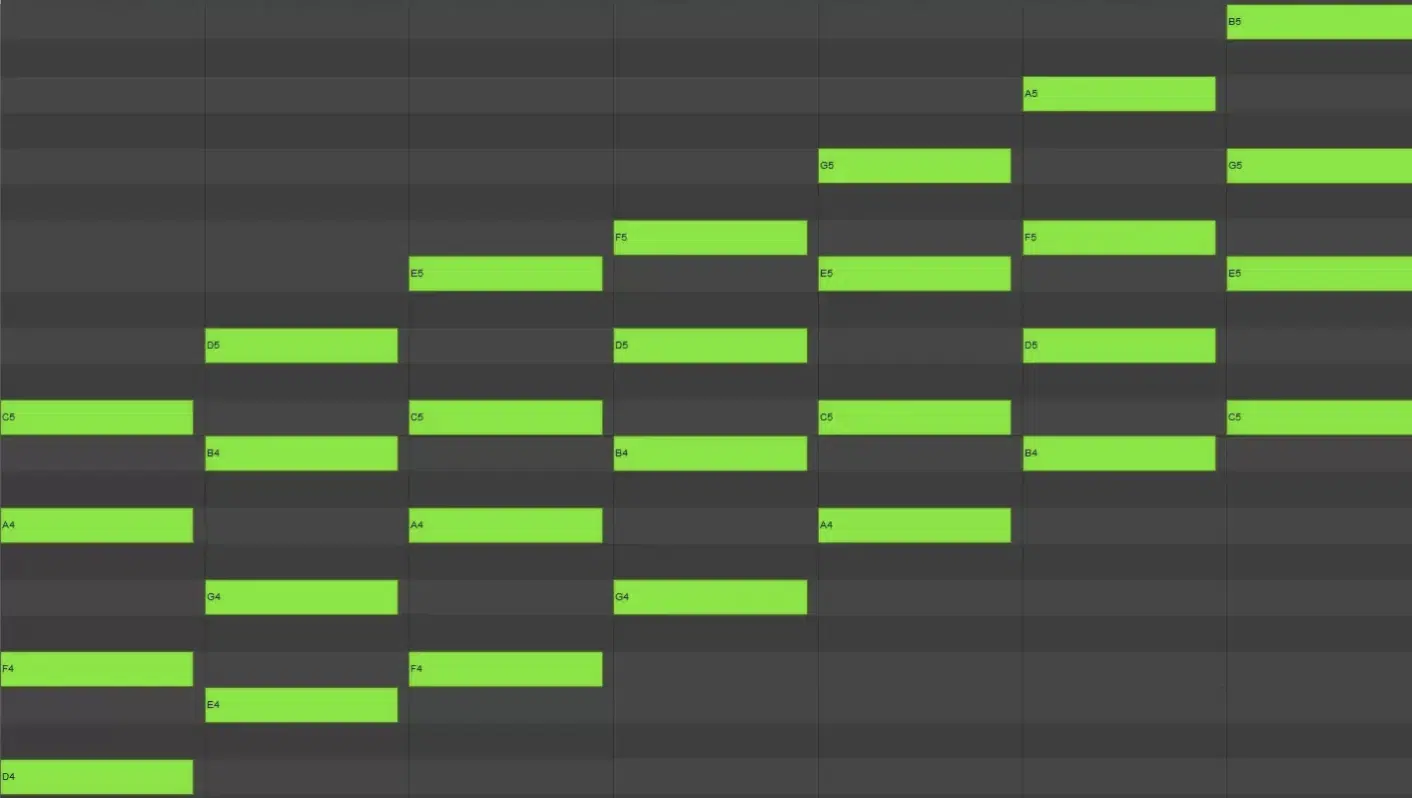
7th Chords in D Dorian
Seventh chords add an extra note to the regular triad, which makes the whole sound feel grander and more complete.
When it comes to gospel music, this added note creates a smoother, more connected feel between chords, making transitions feel almost effortless.
Take the C major seventh chord, for instance: by adding a B to the basic C major chord (C, E, G), you immediately make the sound warmer and more soulful.
This kind of chord not only fills out the unusual harmony but also creates tension that resolves beautifully into the next chord.
Especially when moving to a minor seventh chord like Dm7 (D, F, A, C).
The way seventh chords (7th chords) shape harmony is a game-changer, bringing more emotional depth to any gospel progression you play.
-
Major Seventh Chord vs. Minor Seventh Chord
Major seventh chords and minor seventh chords each bring something different to gospel music, but are equally impactful, so don’t overlook either one of them.
Major Seventh
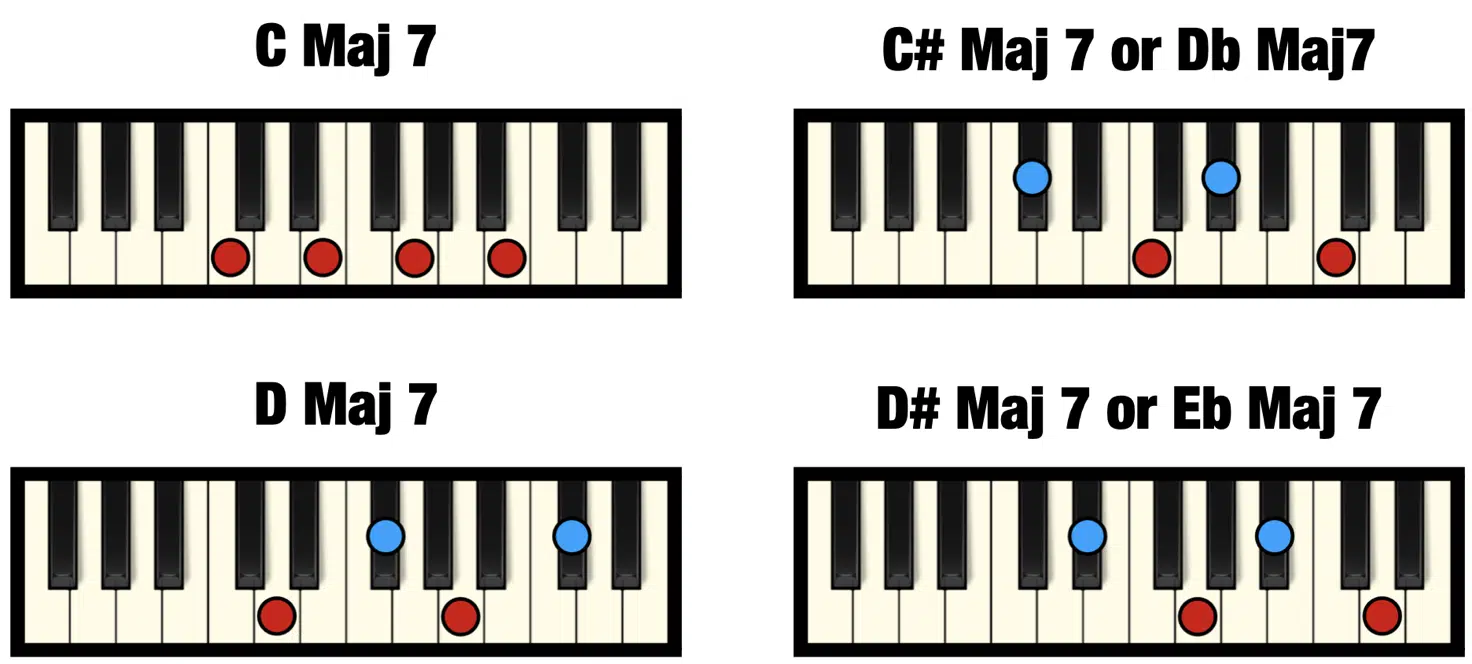
The major seventh chord, like C major seventh (C, E, G, B), has a smooth, dreamy quality that can add a bright, uplifting touch to your gospel progression.
Minor Seventh
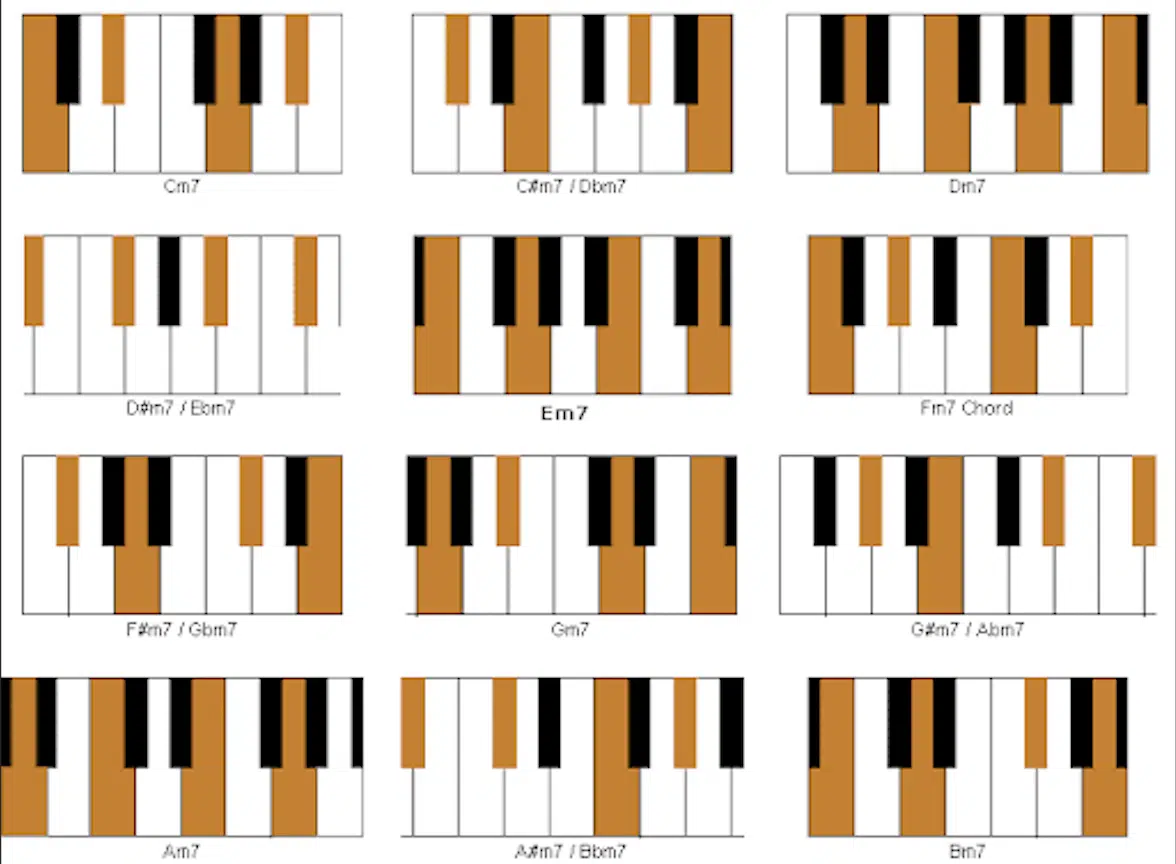
Minor seventh chords, on the flip side, like Dm7 (D, F, A, C), have a more melancholic, soulful sound for added depth and emotion to the overall harmony.
You’ll often find these minor sevenths used to create a “call-and-response” feel, where the major seventh sets up a phrase, and the minor seventh provides the answer.
This back-and-forth between major and minor seventh chords is what gives gospel music its signature blend of joy and soul.
REMEMBER: Use the major seventh chord for more uplifting moments in a song and the minor seventh chord to bring more of a somber, reflective vibe.
-
Half-Diminished Chords and Half-Diminished Seventh Chord

Half-diminished chords are less common than major or minor chords, but they can be incredibly effective in gospel music.
A half-diminished chord includes the:
- Root
- Minor third
- Diminished fifth
- Minor seventh
For example, in the key of C major, a B half-diminished seventh chord (B, D, F, A) acts as a smooth passing chord that leads naturally into the C major chord.
These chords work well in more complex gospel progressions.
It basically brings together the more stable gospel chords to create unexpected but pleasant harmonic movement, which is what you’re going for.
One trick I’ve found helpful is to use the half-diminished chord when you want to soften the transition from a dominant chord to the tonic.
It makes the chord changes feel less abrupt.
You can also experiment with adding a flat ninth on top of a half-diminished seventh chord to create even more tension before resolving.
When used correctly, these gospel chords can make things complex and mind-blowing 一 keeping your gospel chord progression interesting and soulful.
-
Sus Chords
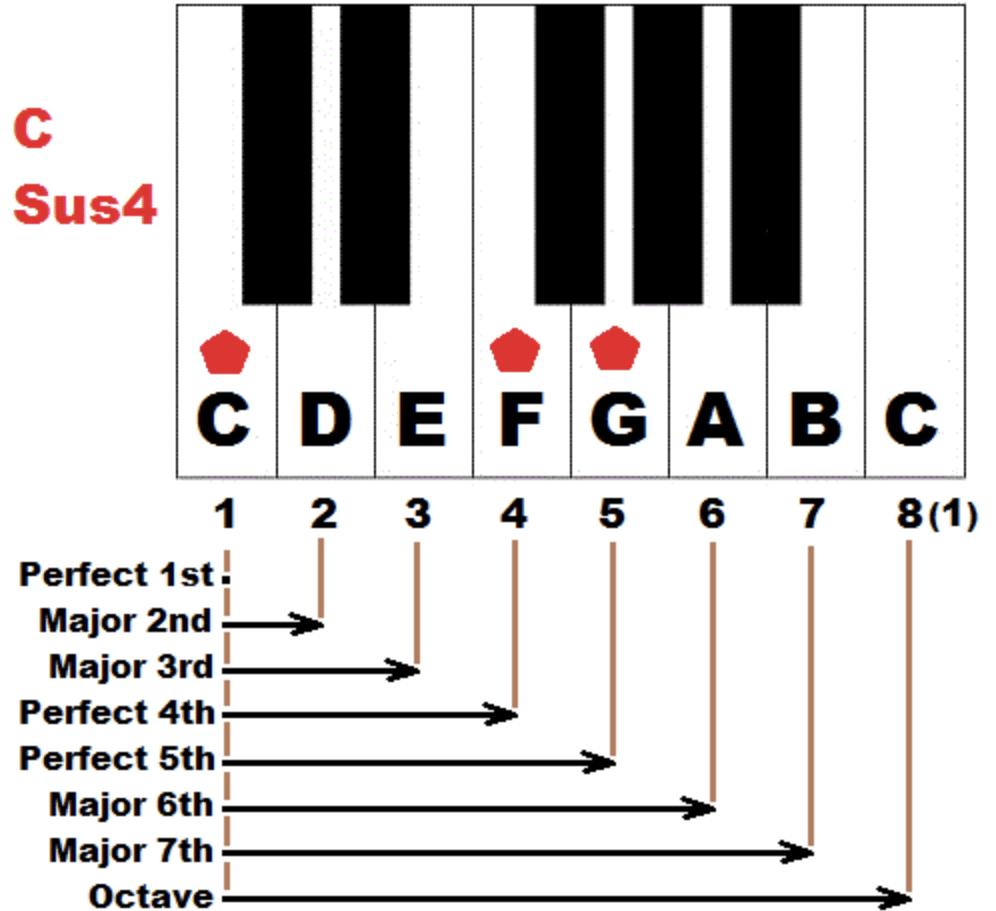
Suspended chords, or “sus chords,” are one of the best tools for adding a sense of unresolved tension to gospel chord progressions.
These chords replace the third of a chord with either the second (sus2) or the fourth (sus4) to create a sound that’s neither major or minor.
It’s something thatI (and millions of other people) find super intriguing.
For example, in the key of C major, a C sus4 chord (C, F, G) provides a feeling of anticipation that begs for resolution back to a regular C major chord (C, E, G).
Sus chords are particularly useful when transitioning between more stable chords, as they offer a “breath” in the gospel chord progression.
It basically lets your listener anticipate what’s coming next, which is great.
PRO TIP: Try incorporating a C sus2 chord (C, D, G) at the end of a gospel song, then resolve to C major for a soft yet powerful finish.
-
Passing Chords in Gospel Music

Diminished passing chords
Passing chords are transitional chords used to connect two main chords in a progression 一 adding movement and fluidity.
In gospel music, passing chords often include diminished or half-diminished chords, like the B diminished (B, D, F) or B half-diminished (B, D, F, A) when moving from C major to Dm7 (D, F, A, C).
These passing chords create a smooth glide between primary chords, which makes the progression feel flawless and just, right.
NOTE: To try this technique, insert a Gm7 (G, Bb, D, F) as a passing chord when moving from F major to C major for a smoother transition.
-
Creating Movement with Secondary Dominant Chords
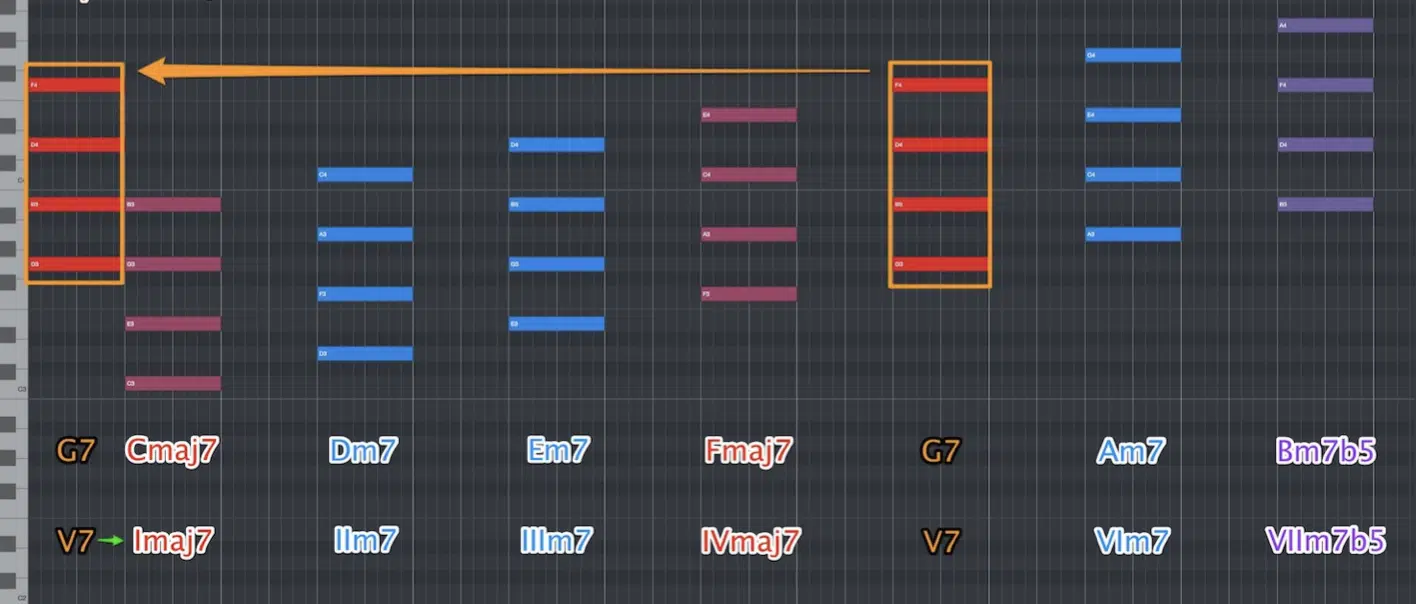
Secondary dominant chords are temporary dominant chords that target chords other than the tonic which is all about tension and excitement.
Unlike the primary dominant (which resolves directly to the tonic) secondary dominants create a brief detour, so to speak, adding unexpected color to the harmony.
For example, in the key of C major, introducing a D7 chord (D, F#, A, C) before a G major chord (G, B, D) creates a stronger pull toward that G chord.
Yes, even though G is not the tonic.
To make this technique more effective in your gospel progressions, try placing secondary dominants before the ii, IV, or V chords.
It will keep the gospel chord progression within that same key, just with a twist.
-
Syncopated Rhythm

Syncopated rhythm refers to a musical rhythm that emphasizes the off-beats to create a groove that feels both unpredictable and energetic at the same time.
In gospel music, this rhythmic technique is usually combined with gospel piano for a sense of movement that drives the entire chord progression forward.
I love how syncopation brings an unexpected burst of energy… It’s one of those techniques that makes gospel music (and other genres, of course) feel alive.
To try this yourself, simply play a C major triad (C, E, G) while emphasizing the “and” of each beat, creating a lively syncopated groove that makes all the chords feel more dynamic/soulful.
Popular Gospel Chord Progressions (Top 13)
Now that we’ve covered everything, let’s break down some of the most popular gospel chord progressions so you get the full picture. These famous gospel chord progressions range from traditional to super contemporary, so regardless of the vibe you’re shooting for, they’re a solid starting point.
#1. I-IV-V (C-F-G)
The I-IV-V chord progression is one of the most fundamental chord progressions in gospel music, made up of the:
- C major chord (C, E, G)
- F major chord (F, A, C)
- G major chord (G, B, D)
Its straightforward structure makes it easy to follow, but the emotional impact is huge 一 just think “Break Every Chain” by Tasha Cobbs, because it’s all up in there.
I love how this chord type can be both simple and powerful 一 making it a must-know for anybody playing gospel piano.
#2. I-V-vi-IV (C-G-Am-F)
The I-V-vi-IV gospel chord progression starts with a C major chord (C, E, G), followed by a G major chord (G, B, D), and an A minor chord (A, C, E).
Then, it finishes things off with an F major chord (F, A, C).
What makes it unique is the inclusion of the vi chord, which adds a touch of depression 一 creating a more modern and emotional sound when playing the gospel piano.
It’s a gospel chord progression commonly found in contemporary gospel songs like “Reckless Love” by Cory Asbury, which gives it a heartfelt, anthemic vibe.
If you produce slower ballads, or want to, this is perfect for you.
#3. I-vi-IV-V (C-Am-F-G)
This common chord progression starts with the bright C major chord (C, E, G) and then moves into the A minor chord (A, C, E) for a touch of melancholy.
Then, it transitions to F major (F, A, C) and finally resolves with G major (G, B, D).
What makes it really special is that vi chord (A minor) addition because it really adds a sense of hypnotizing longing.
Meaning, not only is it hopeful, but it’s introspective as well, which is why it’s considered extremely versatile and desirable within gospel music.
It’s an OG progression in popular gospel songs like “Here I Am to Worship” 一 creating a warm, singable melody that will stick with your audiences for days and days.
#4. ii-V-I (Dm-G-C)
When it comes to the perfect blend of gospel and jazz music chords, the ii-V-I progression takes the cake.
It was rooted in jazz piano music but has made its mark in gospel due to its smooth and satisfying/complete resolution.
In the key of C major, this involves the D minor chord (D, F, A), moving to the G major chord (G, B, D), and resolving on C major (C, E, G).
Its ability to create a “jazzy” yet soulful vibe makes it a favorite in gospel songs like “Total Praise” 一 adding a layer of professionalism to the overall sound.
Side note, if you want to discover the absolute best jazz chords, jazz melodies, or jazz drums, we got you covered.
We even break down exactly how to create jazz progressions, too.
#5. I-IV-ii-V-I (C-F-Dm-G-C)
Starting with the C major chord (C, E, G), this gospel chord progression then shifts to F major (F, A, C), moves to D minor (D, F, A) and transitions through G major (G, B, D).
Finally, it returns to C major for a beautiful ending.
The ii chord (D minor) in the middle adds a softer, more tender feel 一 making this progression perfect for building up to a powerful stop.
If you’re a gospel piano player, this is a great one to start with because it’s a staple in gospel songs like “Great Are You Lord” by All Sons & Daughters.
Its natural flow feels comforting and familiar so people really love it.
#6. I-iii-vi-ii-V-I (C-Em-Am-Dm-G-C)
This might be one of my favorite gospel chord progressions because of its complexity alone, and I’m all about a challenge.
This complex progression:
- Starts with C major (C, E, G)
- Moves to E minor (E, G, B)
- Then A minor (A, C, E)
- Continues to D minor (D, F, A)
- Transitions to G major (G, B, D)
- Finally resolves back to C major
The iii chord (E minor) creates a more intricate harmonic movement, which makes this progression feel more layered.
It’s often used in more intricate, elaborate gospel songs like “Oh Happy Day,” providing a sense of depth and fullness that’s truly satisfying.
#7. IV-V-I (F-G-C)
When it comes to gospel chord progressions, IV-V-I is a classic example of harmonic closure.
It moves from F major (F, A, C) to G major (G, B, D) before resolving on C major (C, E, G).
What’s interesting here is how the chord progression builds tension with the G major chord, creating a strong pull that resolves satisfyingly to the C major chord.
In turn, the return to the tonic feels final chord and perfectly complete.
It’s used frequently in traditional gospel songs like “I Surrender All” for a clear and powerful sense of resolution that wraps up the music with finesse.
#8. I-V-bVII-IV (C-G-Bb-F)
Blending the brightness of C major (C, E, G), the tension of G major (G, B, D), the boldness of Bb major (Bb, D, F), and the warmth of F major (F, A, C), this one’s epic.
When it comes to gospel chord progressions, it’s actually considered the ‘core.’
It creates a vibrant blend of gospel and blues that many jazz musicians love and many people love to hear.
The shift from G to Bb adds an unexpected twist that gives the music a raw, earthy feel, balancing joy with grit.
This unique progression is a standout in popular songs like”Blessings on Blessings” by Anthony Brown & group therAPy, where its mix of gospel’s uplifting spirit/blues’ soulful tones creates an emotional explosion.
#9. I-IV-V-I (C-F-G-C)
The I-IV-V-I gospel chord progression is a key player in traditional gospel music.
This unique progression:
- Begins with the uplifting C major (C, E, G)
- Flows into F major (F, A, C)
- Builds tension with G major (G, B, D)
- Then, returns home to C major
It’s this final return to the tonic that makes it feel like a complete, triumphant conclusion.
The simple, yet insanely powerful sense of closure is out of this world.
It’s a beloved ending in songs like “This Is the Day” by Fred Hammond 一 bringing that unmistakable sense of reassurance and finality to the listener.
#10. ii-V-I-IV (Dm-G-C-F)
The ii-V-I-IV gospel chord progression is the last one on our list, but don’t get it twisted, it’s super powerful and impactful.
It’s one of the more expansive and fluid movements in gospel music, beginning with the D minor chord (D, F, A), progressing to G major (G, B, D), resolving on C major (C, E, G), and transitioning to F major (F, A, C).
This chord progression is the king of building momentum while maintaining a sense of resolution (so its both ‘open’ and ‘complete’ at the same time).
It’s a key feature in songs like “Great Jehovah” by JJ Hairston, where the added IV chord at the end extends the emotional reach of the music.
It really gives the chord progression a rich, full sound that’s both uplifting and expansive, which is why I find it very alluring myself.
Bonus: Using Chord Tones to Create Beautiful Progressions
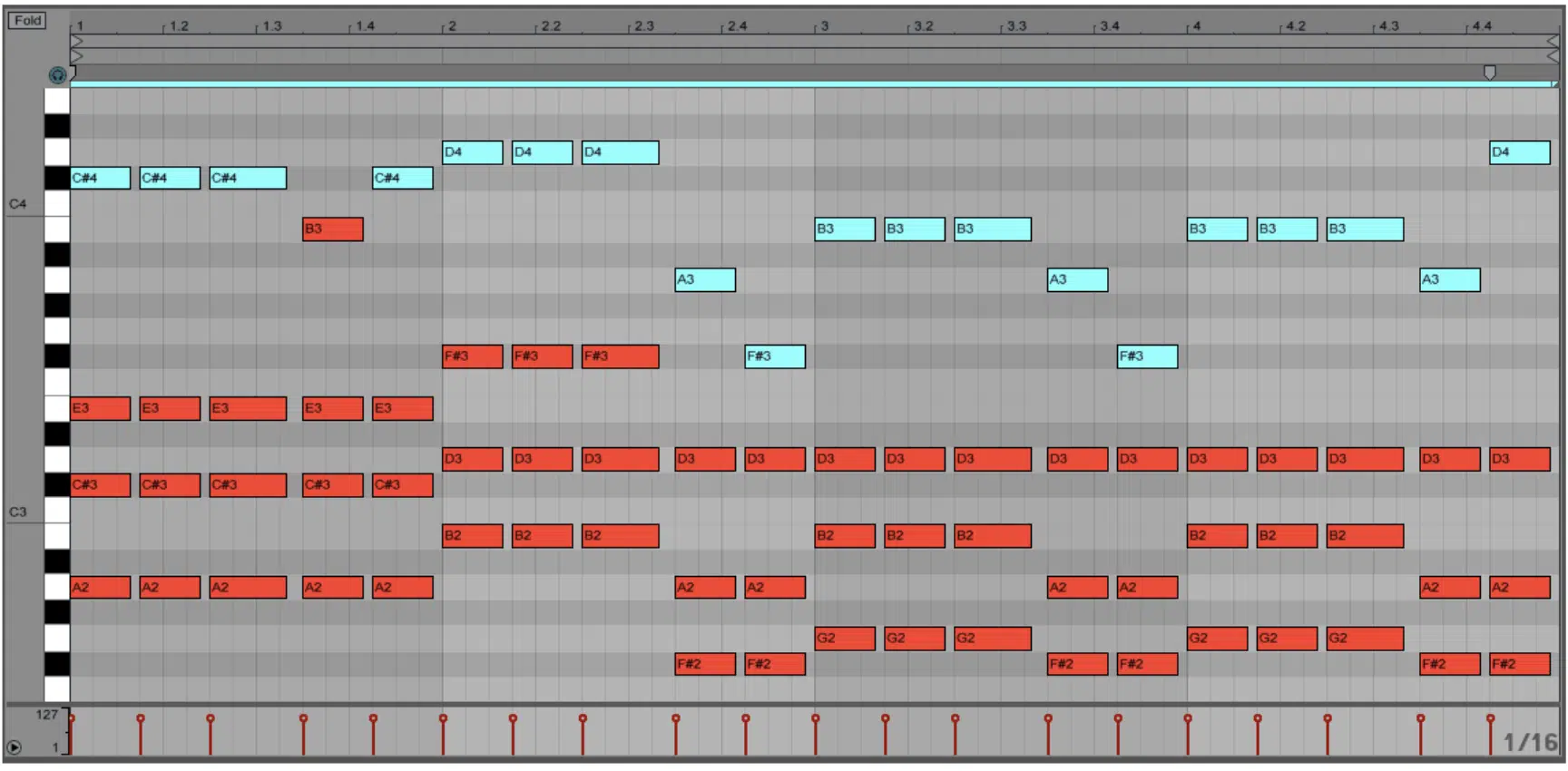
Chord tones are highlighted
Chord tones are the individual notes that make up a chord, such as C, E, and G in a C major chord.
In gospel music, hyping up specific chord tones can add emotional impact to your chord progression like never before.
For example, emphasizing the major third (E) in a C major chord can brighten the sound, especially when used at climactic moments of a song.
You can achieve this by adding a little extra volume or sustain to the E note using MIDI controls or by doubling it on another instrument, like an organ, for a sick effect.
On the same note, focusing on the minor seventh (C) in a D minor seventh chord (D, F, A, C) can add a more soulful, melancholic feel.
It’s perfect for transitions or verses that need emotional depth.
To enhance this, try sliding into the minor seventh from a half step below (B), which adds a bluesy, gospel-like character.
One great technique is to add embellishments, like a passing tone (F#) between F major (F, A, C) and G major (G, B, D), which keeps the chord progression smooth and engaging.
It will really enhance the overall gospel sound.
NOTE: Try using scale tones to add melodic movement, like adding a G note over a C major chord can lead the ear toward a G major chord transition.
Final Thoughts
Well, there you have it, the ultimate guide on gospel chord progressions (and the most popular examples as well).
With this new information, you’ll be able to knock out gospel chord progressions that are soulful and dynamic all day long.
Plus, you now know how to use dominant chords, seventh chords, passing chords, and more to make your music truly stand out (which is super beneficial).
And, as a special bonus, you’ve got to check out the legendary Gospel MIDI Chord Collection.
It’s packed with over 1,800 MIDI files 一 including major and minor progressions, complex chord voicings, and even a comprehensive PDF guide.
This collection is 100% invaluable for learning how to use authentic gospel chord progressions into your own music.
With it, you can easily import these progressions into your DAW for instant creativity and a more professional sound, dominating the competition in this genre.
By mastering these gospel chord progressions, you’ll have a powerful toolset to bring your songs to life.
So, keep experimenting, stay inspired, and let these soulful chords elevate your music to the next level.
Until next time…







Leave a Reply
You must belogged in to post a comment.